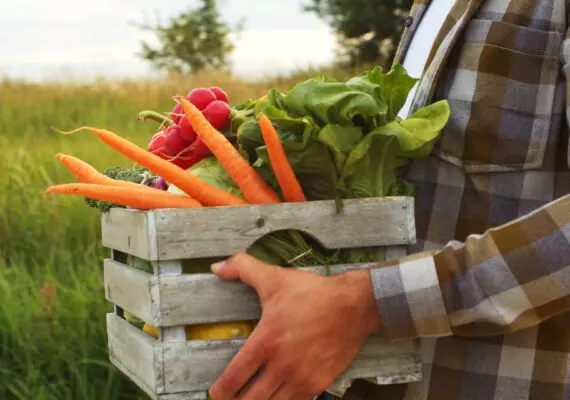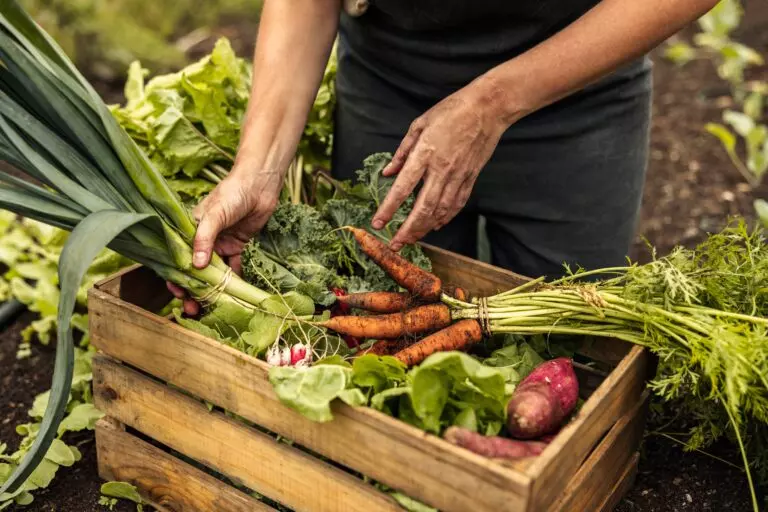
WHAT IS VEGETABLE GARDEN LIMING?
Every garden has its own microclimate and soil properties. Before starting to cultivate vegetables, it’s worth getting to know its specifics. Soil samples can be taken and sent to a laboratory for analysis. This way, it will be known what acidity the soil in the garden has and what nutrient deficiencies characterize it.
If it turns out that the soil is highly acidic and it’s necessary to adjust its pH, it’s worth considering using granular lime. It should be evenly mixed with the soil in the appropriate dose. This way, it will gradually release into the soil and neutralize it. Furthermore, if the test results show a magnesium deficiency in the soil, dolomitic lime can be used instead of regular lime.
It often happens that due to excessively acidic soil, plants are unable to grow and develop properly. Sometimes, low pH means that despite the presence of nutrients in the soil, plants are unable to absorb them and wither, failing to produce the expected yields. Only when the soil pH is adjusted, calcium and magnesium are supplied, and the plant’s ability to absorb nutrients is unblocked. As a result, they can grow properly. Their resistance to diseases and fungal infections also increases. It should be remembered that lime should not be applied together with other fertilizers such as nitrogen or organic ones. At least a month’s break should be maintained between them.
WHEN TO LIME THE VEGETABLE GARDEN?
Liming the vegetable garden is best done in autumn after the harvest in the garden or early spring, at least a month before sowing seeds or planting seedlings. The lime dose should be adjusted to the area to be limed and the soil parameters desired.
This procedure is best done on a warm, sunny, and windless day. This way, excessive dusting can be avoided. It should be remembered to evenly spread the lime and mix it with the soil.
WHICH VEGETABLES LIKE LIMING AND WHICH DO NOT?
Vegetables that do poorly in freshly limed soil are mainly:
beetroot;
tomato;
onion;
celery;
carrot;
pea;
cucumber;
garden dill;
corn.
These vegetables should preferably be planted or sown at least a year after liming when the lime concentration in the soil decreases. Most other vegetables thrive on freshly limed soil.
Most fruits grow well on calcareous soils. Such soil particularly favors the growth of peaches. Raspberries are an exception, but they will also thrive in such soil if properly irrigated and mulched.
Herbs also thrive on limed soils, e.g., thyme, sage, rosemary, hyssop, or common valerian. Parsley, on the other hand, will grow better in the years following soil liming.

WHAT CAUSES SOIL ACIDIFICATION?
Soil acidification in the garden occurs due to many factors. The first of these is the geological structure of our country. Because Poland is located in post-glacial areas, about 60% of the soils are acidic or very acidic. Bile processes also have a detrimental effect on the soil, causing basic compounds to leach from the upper layers and enter those below.
Soil acidification is also caused by human activity. Through the cultivation of vegetables and fruits, as well as the use of fertilizers, the soil becomes acidic. Acid rain and atmospheric precipitation, which leach calcium and other nutrients from the soil, also play a role.
Low soil pH and the resulting soil acidification also contribute to faster leaching of nutrients from the soil. Elements such as magnesium, potassium, nitrogen, and phosphorus are less absorbable and less bioavailable to plants. Heavy metals have a much greater impact on cultivated species. Microorganisms, which support seedling growth, also develop less favorably. Low pH increases the risk of plant diseases, including fungal ones. In such cases, it is necessary to increase the costs allocated to plant protection measures to save yields.

WHICH LIME FERTILIZER TO CHOOSE?
The choice of lime for liming the vegetable garden depends on the desired effect. The one that acts fastest is in oxide form. It is also called burnt or construction lime. It can be used on heavy soils or those with a very low pH. It should not be used in the period preceding sowing or planting.
Slower-acting and safer to use is carbonate lime. It occurs naturally in nature. It is much more effective than oxide lime. For example, it can be in the form of chalk powder. It can be used on light and medium soils, and it has a faster lime absorption rate. Therefore, liming with a more reactive fertilizer, such as oxide, could lead to imbalances and serious disturbances in the soil.






